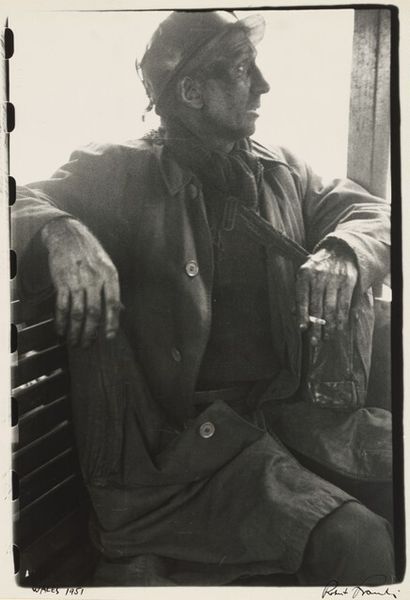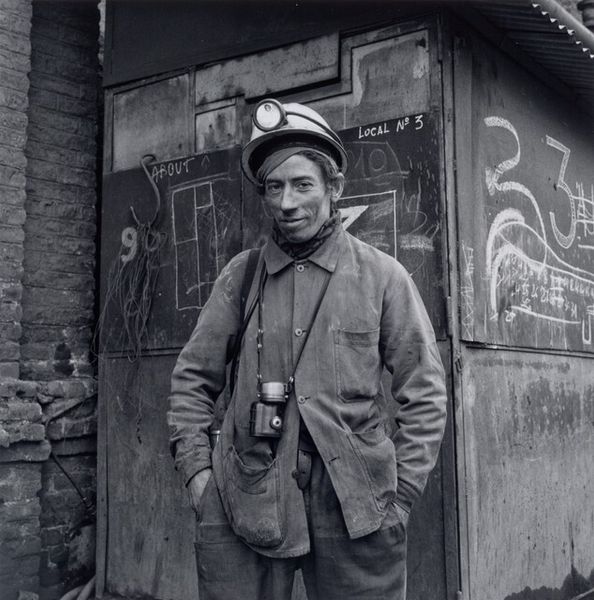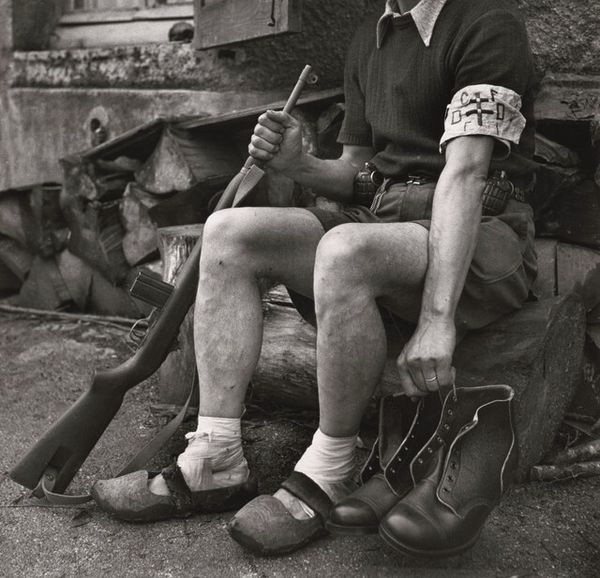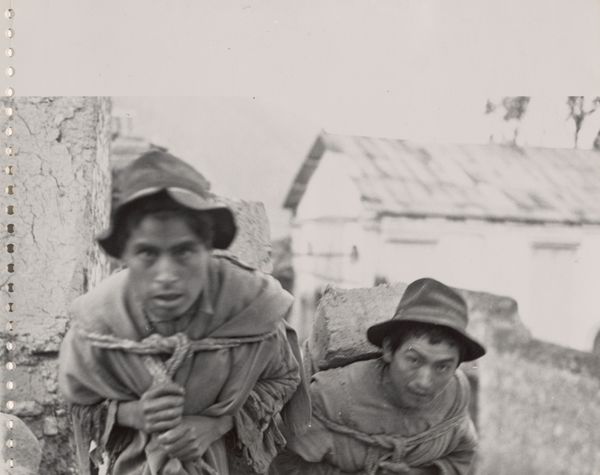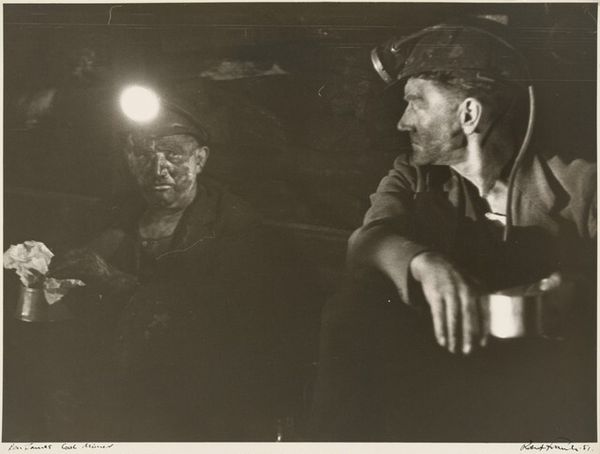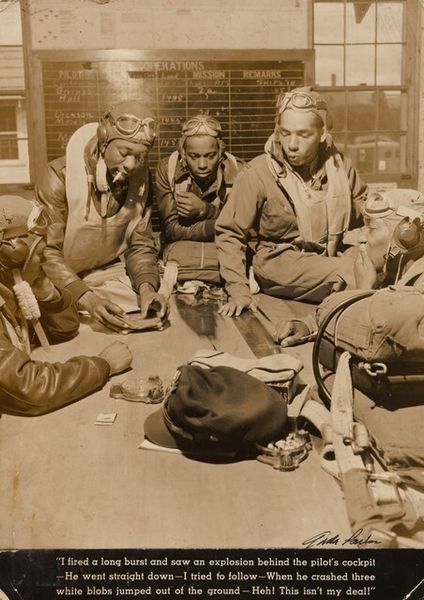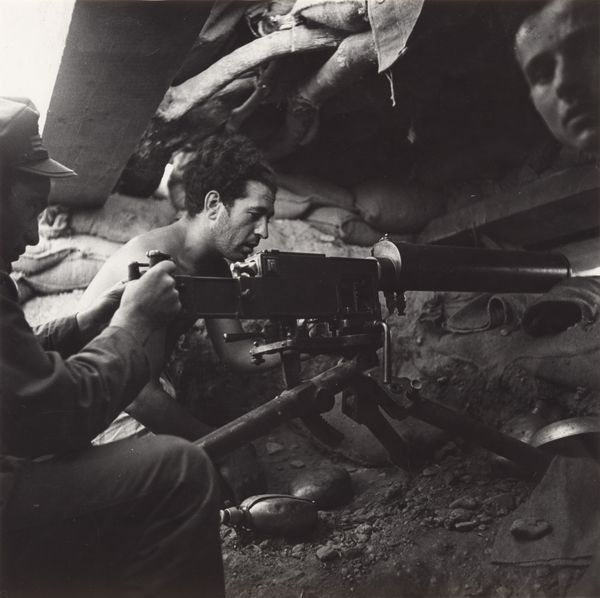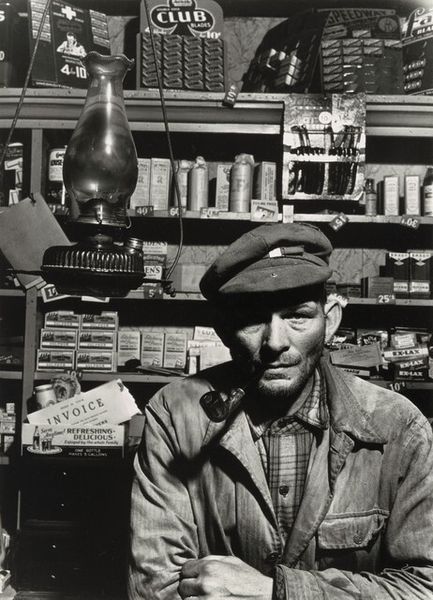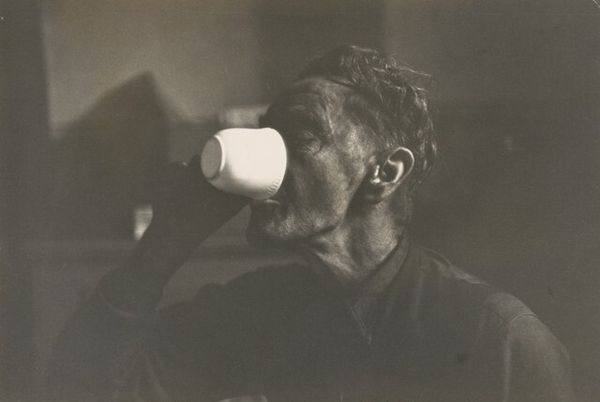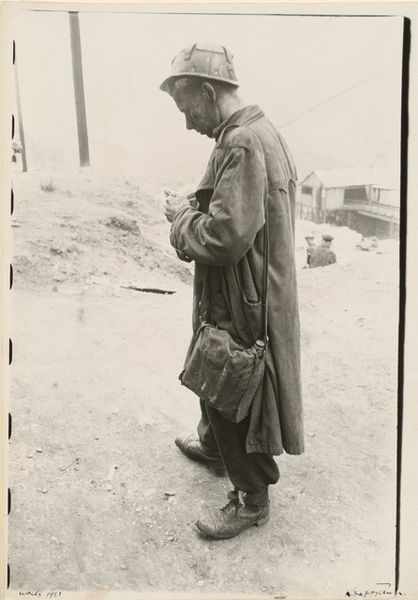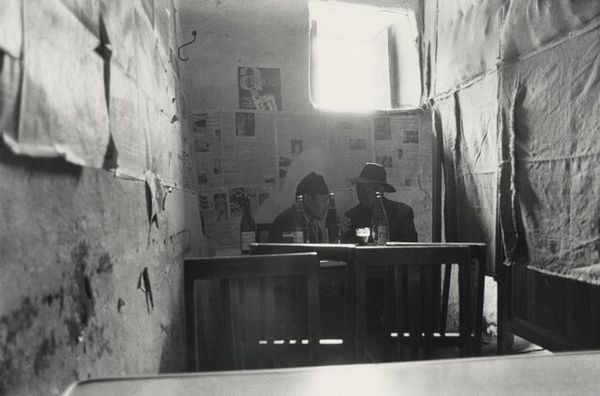
Ralph Coxson, Shenango Ingot Molds (Working People series) 1978
0:00
0:00
photography, gelatin-silver-print
#
portrait
#
black and white photography
#
social-realism
#
photography
#
black and white
#
gelatin-silver-print
#
monochrome photography
#
monochrome
#
realism
#
monochrome
Dimensions: image: 17.2 x 16.3 cm (6 3/4 x 6 7/16 in.) sheet: 25.2 x 20.3 cm (9 15/16 x 8 in.)
Copyright: National Gallery of Art: CC0 1.0
Curator: Milton Rogovin's gelatin-silver print, titled "Ralph Coxson, Shenango Ingot Molds (Working People series)," was created in 1978. Editor: The starkness is the first thing that hits you. It’s a portrait but it’s also… grimy, and there is a palpable weariness about it. Curator: Rogovin devoted a significant part of his career to documenting working-class communities, particularly in Buffalo, New York. He often focused on individuals and families facing economic hardship. Editor: You really feel the historical context weighing down every detail. Look at his face – the soot etched into every pore, the protective goggles perched on his head – and how it emphasizes the harsh realities of industrial labor and working conditions at the time. Curator: His methodology was quite distinct; he would return to the same communities every few years to show social change over time, really capturing long-term socio-economic issues. It reveals a complex, and, if you will, lived picture of society in decline. Editor: There’s something undeniably humanizing about his approach too, though. It avoids the trap of othering, or voyeurism, which you so often see when portraying marginalized groups. His steady and unvarnished look demands our respect, our understanding, and possibly our action to transform our modern work settings. Curator: Absolutely, he positions his subjects with such deliberate honesty and candor; there's no embellishment. His portraits are not only artworks; they function as significant sociological and historical records. Editor: What sticks with me is the enduring question of representation and agency. Does the camera liberate or further imprison these subjects? I'd argue Rogovin walked that difficult line remarkably well. His respect is evident. Curator: Ultimately, Rogovin compels us to reconsider how we depict working populations and reflect on the historical backdrop molding our present society. Editor: Precisely; images like these invite critical examination of those larger power structures and inequities and I hope we can channel that into transformative action.
Comments
No comments
Be the first to comment and join the conversation on the ultimate creative platform.

